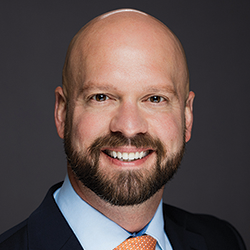
Voice of the President | November 2022
For as long as our profession has been around we have explored new and better ways of accomplishing our work. In fact, a 2017 American Journal of Nursing article reported “Nurses regularly circumvent work systems they perceived to be flawed to provide more efficient or better care.” In their simplest form, workarounds are creative strategies of achieving the same outcome with less time and effort.
As nurse leaders, we are uniquely positioned to reimagine how and where our workflow and care models can be revolutionized.
In today’s environment, the traditional nursing models for delivering care are being questioned by both nurses and others within and outside of the health care field. As nurse leaders, we are uniquely positioned to reimagine how and where our workflow and care models can be revolutionized. Most of us are exploring new strategies for patient care and staff support. Navigating through our workforce challenges requires rejecting the status quo and collaborating together to explore what’s possible.

A great example of this collaboration is the Partners for Nurse Staffing. Together the American Association of Critical Care Nurses, the American Nurses Association, the Institute for Healthcare Improvement, the Healthcare Finance Management Association and AONL have joined forces and are using a think tank approach to work through a shared agenda. Their goals include achieving better patient outcomes, improved patient experience, creating a thriving nursing workforce and optimizing the value of care. They have six priority topics, including one on innovative care delivery models which aligns with this month’s theme of the Voice of Nursing Leadership. The partnership calls health care leaders to adopt “tribrid care delivery models” which include on-site care delivery, IT integration of patient-monitoring equipment and ambulatory access and virtual care delivery. To learn more about the partnership’s work, visit nursingworld.org/practice-policy/nurse-staffing/nurse-staffing-task-force/.
Recently I have had the opportunity to speak at a few conferences. While present I took the chance to attend some sessions and hear what other leaders in our field are doing. Throughout the conferences one thing is certain: technology, artificial intelligence and predictive analytics are strong components of our future. In this issue, Janelle Kwan outlines the many ways artificial intelligence will affect nursing care.
One conference presenter, focusing on new innovations, reminded us that when exploring new ways of doing things we must first identify and understand the problem. This resonated with me as I know I’m guilty of jumping into idea generation and solution identification before getting at the root of the issue. As we consider changing our care models, what are the problems we’re trying to solve?
A consistent problem is the overwhelming workload placed on our teams. One presenter’s organization thought creatively and explored ways to eliminate steps, shave minutes off tasks and leverage technology to assist caregivers. They invested in robots to help deliver medications, labs, food trays and supplies to units throughout the hospital.
Another common theme is the promotion of well-being and efforts to recreate the joy of caring for patients. One organization invested in technology that allowed patients, families and members of the care team to post notes and videos recognizing individuals or teams for making a difference. The uplifting messages increased staff satisfaction, raised retention rates and reduced contract labor expenses.
One of the most common themes I’ve observed is leveraging technology to optimize patient care. One particular organization installed high-resolution cameras in its patient rooms. This allowed nurses from a remote location to help monitor patients, assist with documentation and serve as an independent double check. The virtual nurse helped with items such as admission history, discharge education, preventing falls and monitoring vital signs. The organization emphasized how lucky patients were to have two nurses taking great care of them! Ruth Sagastume, CNO at Ochsner Medical Center – Kenner in Louisiana explores another great example of virtual nursing in this issue.
Another example of leveraging technology – and an all-time favorite of mine – was implemented in a pediatric hospital that utilized gaming to enhance the patient experience, reduce workload and improve the team’s efficiency. In one case described, a school-age patient with severe burns went from needing six nurses for dressing changes down to two. One nurse did the dressing changes while the other played video games with the patient, helping distract him from the painful and anxiety-producing procedure.
As a nurse leader I’ve always enjoyed problem solving, rethinking the way things are done and achieving results. A few years ago I had the great pleasure to be a part of a team piloting the adoption of a clinical nurse leader (CNL). This role is occupied by a master’s-prepared nurse, trained to focus on population health and care across the continuum. One CNL, working with coronary heart bypass graft patients, quickly demonstrated the impact of the role. In a short period, she was able to effectively reduce this patient population’s length of stay, improve pain management scores, increase distance walked post-surgery, decrease readmission rates and improve compliance with post-discharge follow-up appointments. The impact of her interventions saved the organizations hundreds of thousands of dollars and more importantly, improved patient outcomes. Similarly, a team at Rush University Medical Center in Chicago created an ambulatory care clinic in its bone marrow transplant unit involving additional roles and teamwork, resulting in improved patient outcomes. Their efforts are profiled in this issue.
All of these examples show nursing ingenuity and an unwavering passion for improving patient care. Commitments like these will carry us through these challenging times and in to the future.
Speaking of the future, I want to extend my heartfelt congratulations to this year’s 20 Young Professional Voices honorees recognized in this issue for their exemplary leadership. These nurse leaders are among the best and brightest and are already having an incredible impact in health care. They give me confidence that the future of our profession is in great hands.


